The question, can headphones dent your head, is quite common among most headphone users.
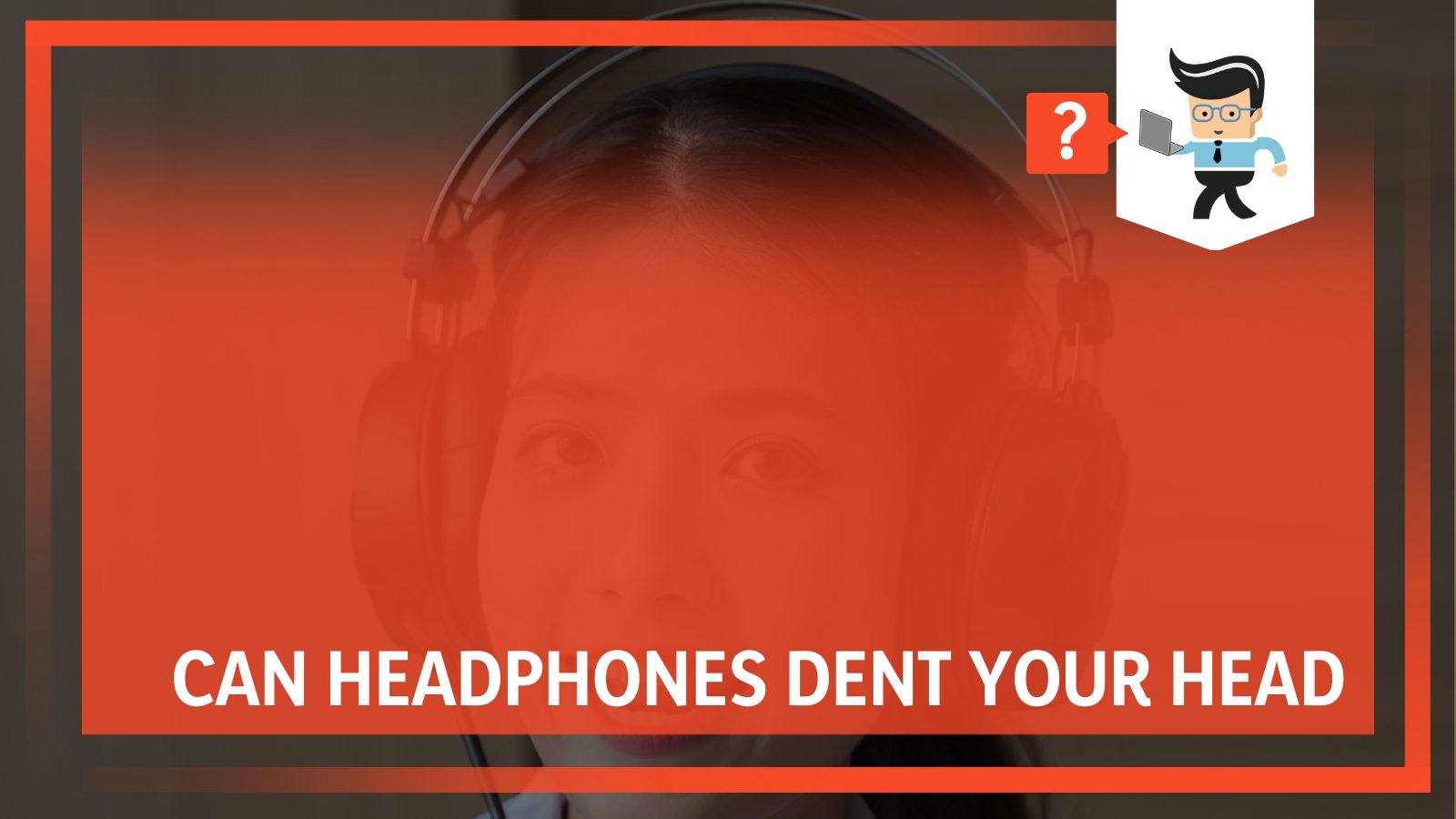
After wearing headphones for some time, you may notice a headband-shaped dent on your hair.Is this something to worry about?
Let’s get a definitive answer to this question in this post.
Contents
Does Prolonged Headphone Use Dent Your Head?
Yes, using your headset for a long time causes a temporary indentation on your head. The indentation from the headphones occurs only in the outer skin and the hair where the headphones rest. Therefore, it will not affect your skull unless you have an underlying condition that affects your skull.
You shouldn’t worry much when you notice a headband-shaped dent on your hair after taking off your headphone. Usually, the dent disappears within a few minutes or hours, depending on its size. In fact, temporary headphone dents are common among gamers. The dents are noticeable that can leave you worried.
So, for those asking, can a gaming headset dent your head? The answer is yes! You will get a temporary dent or creases from your headset – the creases are superficial.
Why Do You Get Head Creases From Your Headsets?
You get head dents from your headset because it is too tight and exerting considerable amount of pressure on your head. Moreover, you can also encounter this situation if you are using headphones for hours without putting them down even for once.
– Headphone Hair
Headphone hair occurs when the headband of your headset exerts too much pressure on your head. As a result, it flattens the hair on your head in that region. If your headset’s bands are too tight, they exert too much pressure resulting in a dent or crease on your scalp.
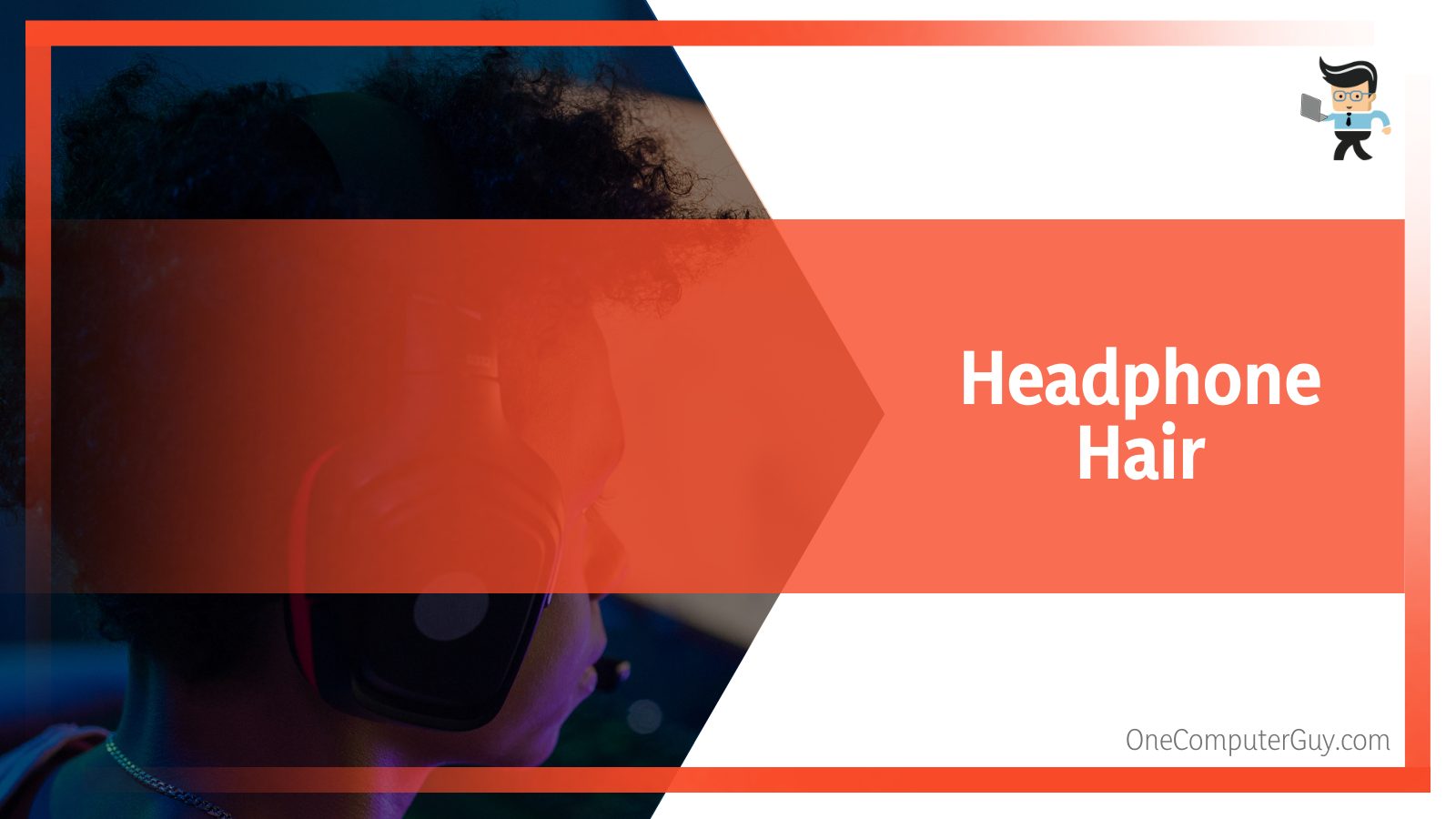
Headphone hair should not worry you because it does not cause permanent damage to your head. With time, your hair gradually returns to its state within a few minutes. However, in some instances, it may stay a bit longer.
– Prolonged Headphone Use
Using your headsets for a long time will result in a slight dent in your head. This is a common phenomenon among gamers. When you type, “can headphones dent your head Reddit,” you will see viral posts of people making fun of gamers about dents on their heads after using headsets.
For instance, Tyler1’s head dent – this League of Legends streamer shows his visible head dent after taking off his headset after a few hours of use.
Remember, your headset will cause head creases even if they are not too tight, but you use them for a long time.
But again, this should not worry you as it will go away on its own. A headband mark is similar to a mark you get when wearing eyeglasses. While they are apparent at first, they will slowly fade away after a few minutes.
When Do You Get Permanent Dents From Headsets?
You only get dents on your head if you have an underlying disease. Such diseases require urgent medical attention. So, the skull dents are not a result of using headphones but a result of the underlying disease.
The common diseases known to cause dents on the skull are described below.
– Craniosynostosis
Craniosynostosis is part of Congenital Skull Indentation. It occurs when the baby’s skull fuse prematurely, amking the head appear dented.
Most congenital depressions usually occur in fetuses and young children. The majority of the cases usually occur due to obstetric trauma at delivery. So, this Indentation does not occur in the studios or wherever you use your headsets.
However, if it occurs, consider it a rare coincidence.
– Osteitis Deformans or Paget’s Disease of Bone
Paget’s disease is a bone disease that interferes with the standard cycling process in which the bone slowly replaces the old bone tissues.
Ideally, it causes the body to generate the bones too fast. With time, the bones get fragile and misshapen.
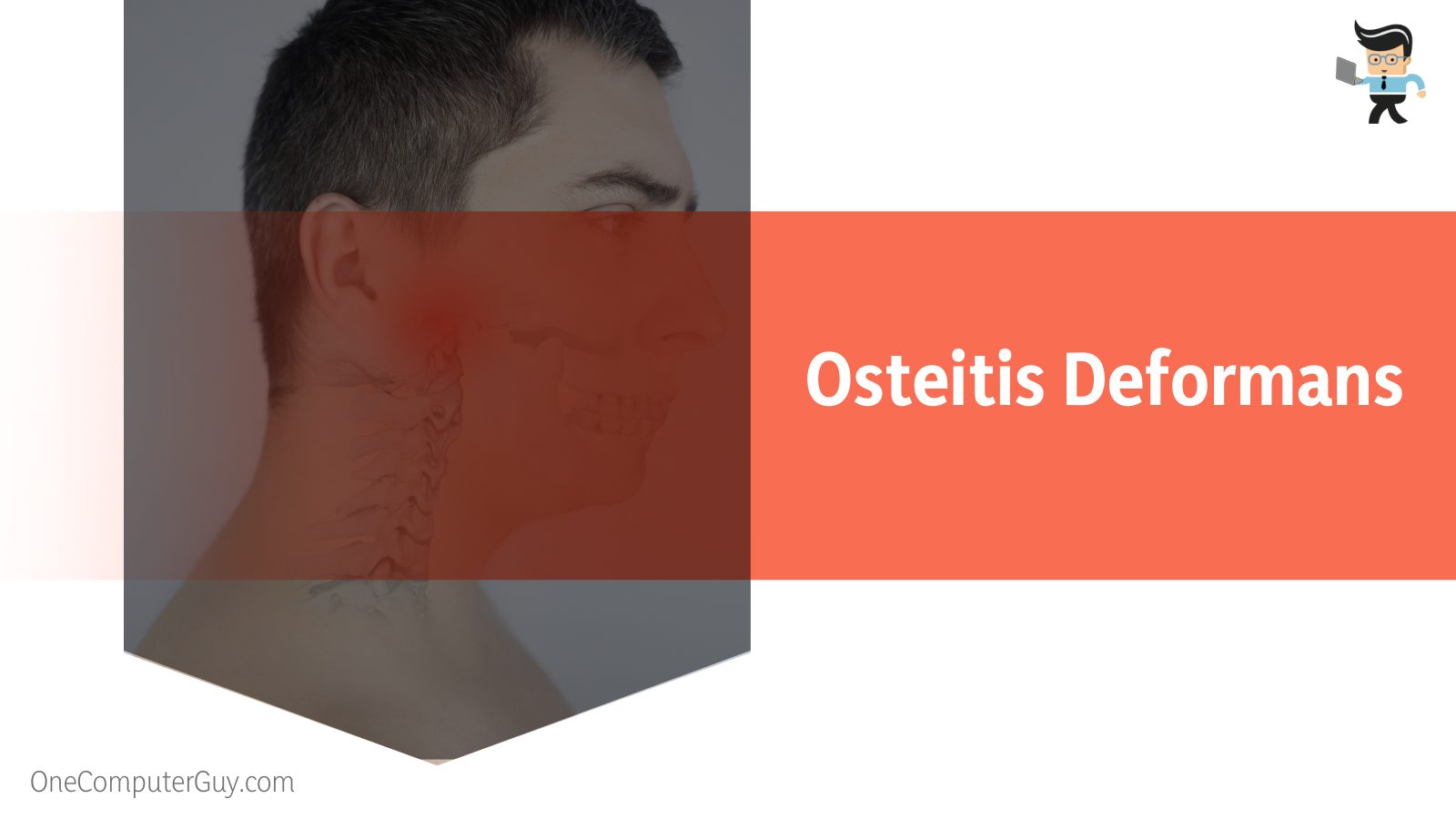
The disease occurs in several bones, including the skull, pelvis, and spine, causing these bones to be irregularly shaped.
The risk of this disease increases with age and genetic predisposition. However, this disease is now less common and less severe. In case it occurs, complications include hearing loss, broken bones, and pinched nerves.
– Phantom Bone Disease
Phantom bone disease is a rare disease whose cause is unknown. Phantom bone disease, also called Gorham’s disease, is characterized by osteolysis (bone loss). The condition is associated with abnormal blood vessel growth.
Bone loss can only occur in one bone or spread to soft tissues and adjacent bones. Its main symptoms include swelling, pain, and an increased risk of bone fracture. While the disease involves all parts of the skeleton, it is widespread in the skull, jaw, pelvis, and spine.
– Cancer of the Bone
While bone cancer can affect any bone, some forms are specific to the skull bones. When bone cancer occurs in the skull, it causes deformations and dents in the head. This is typically due to unusual bone cell growth that destroys the bone tissues.
While rare, bone cancers, such as multiple myeloma, can result in bone depression and irregularities.
– Trauma
A serious injury to the head is trauma. When the injury is severe, it usually results in a fracture to the skull, causing a dent in the head. All dents on the head need immediate medical attention. When a dent occurs, it could mean that a bone is pointing toward your brain, which may cause more damage.
Note that a minor fracture on the skull can only be caused by at least 135 kilograms, according to one study. Clamping a headphone on your head does not generate such a force and, thus, won’t cause any harm to your head.
How Do I Prevent Headphone Creases?
You can minimize the headset creases on your head with the following measures:
– Adjust the Headband
When using a very tight headband, you will experience creases on your head and hair. Therefore, it is essential to adjust the headband on the headset to feel comfortable on your head. Most modern headsets allow adjusting the tightness depending on the size, shape, and comfort level.
A headphone with adjustment capabilities typically allows you to vary the force of the headset against your head.
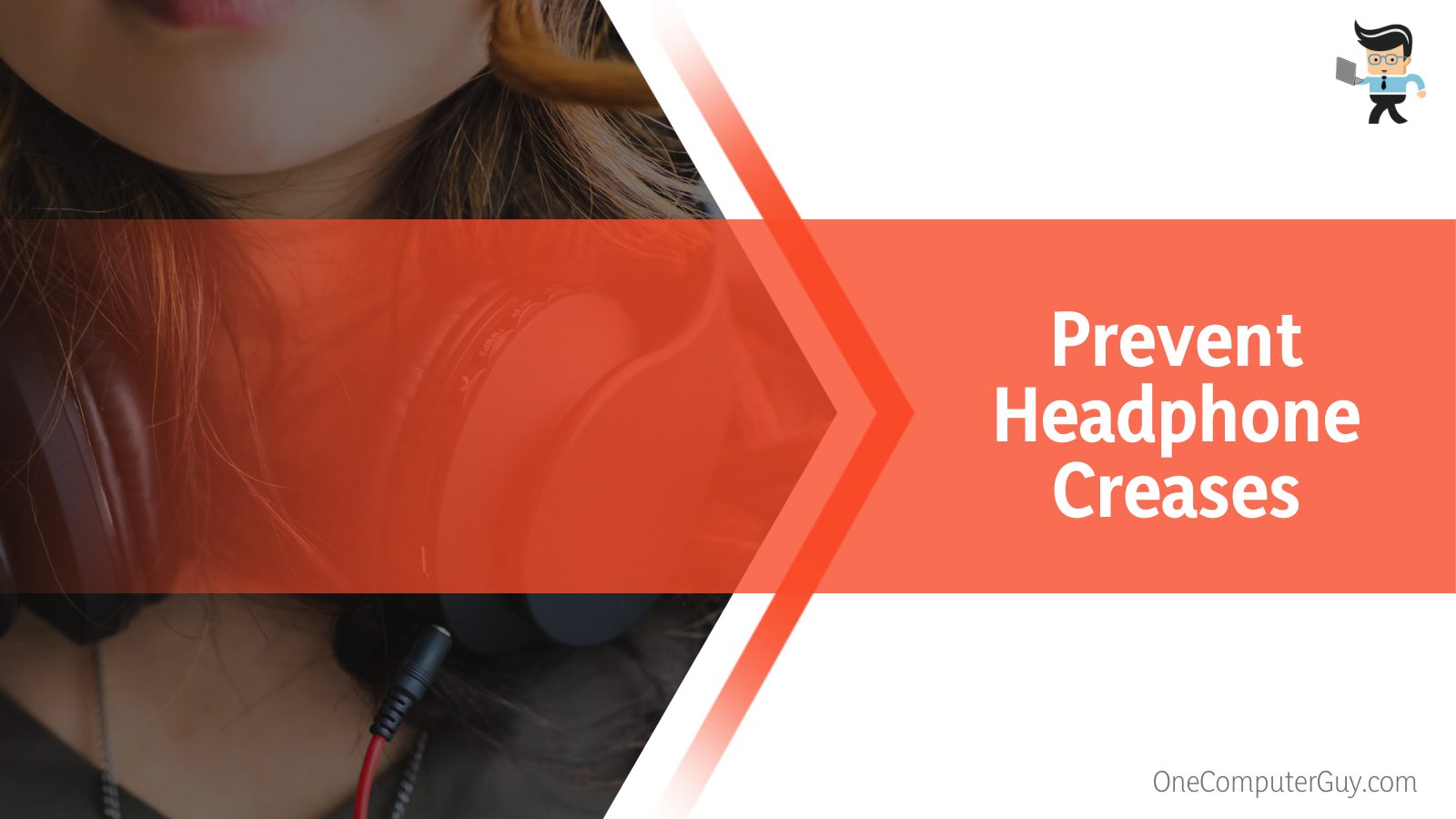
Such headsets typically have a top bridge portion connected to a side arm at each end. When you adjust, you alter the inward or outward movement of the side arms relative to the top bridge portion. The side arms are pivotally connected to the top bridge portion.
Adjust the headband until you get to the most comfortable position, then lock it using the headset’s locking mechanism.
– Cushion Your Head
The best and easiest way to cushion your head against dents from your headsets is by wearing a beanie. The beanie provides a shield against the force that your headphone generates. This relieves most of the pressure imprinting on the sides of your head.
However, wearing the beanie over your ears will muffle the sound to a certain extent, especially when listening to high-frequency sounds. So, if you are performing activities that need high-fidelity sounds, avoid wearing the beanie over your ears.
– Pad the Headphone Bands
Besides padding your head, you can add more padding to the headsets, especially around the ear or at the top of the headsets (on the band). So, stuff some foam or padding under the ear pad all around. This increases the padding thickness creating more space within the earcups.
Get padding specific to your headsets model if your headband hurts your skull or leaves dents on the skin. But there is some universal padding that fits just any headband. Their prices vary depending on the quality – so if you need your headsets to look fashionable, buy pricier cushioning.
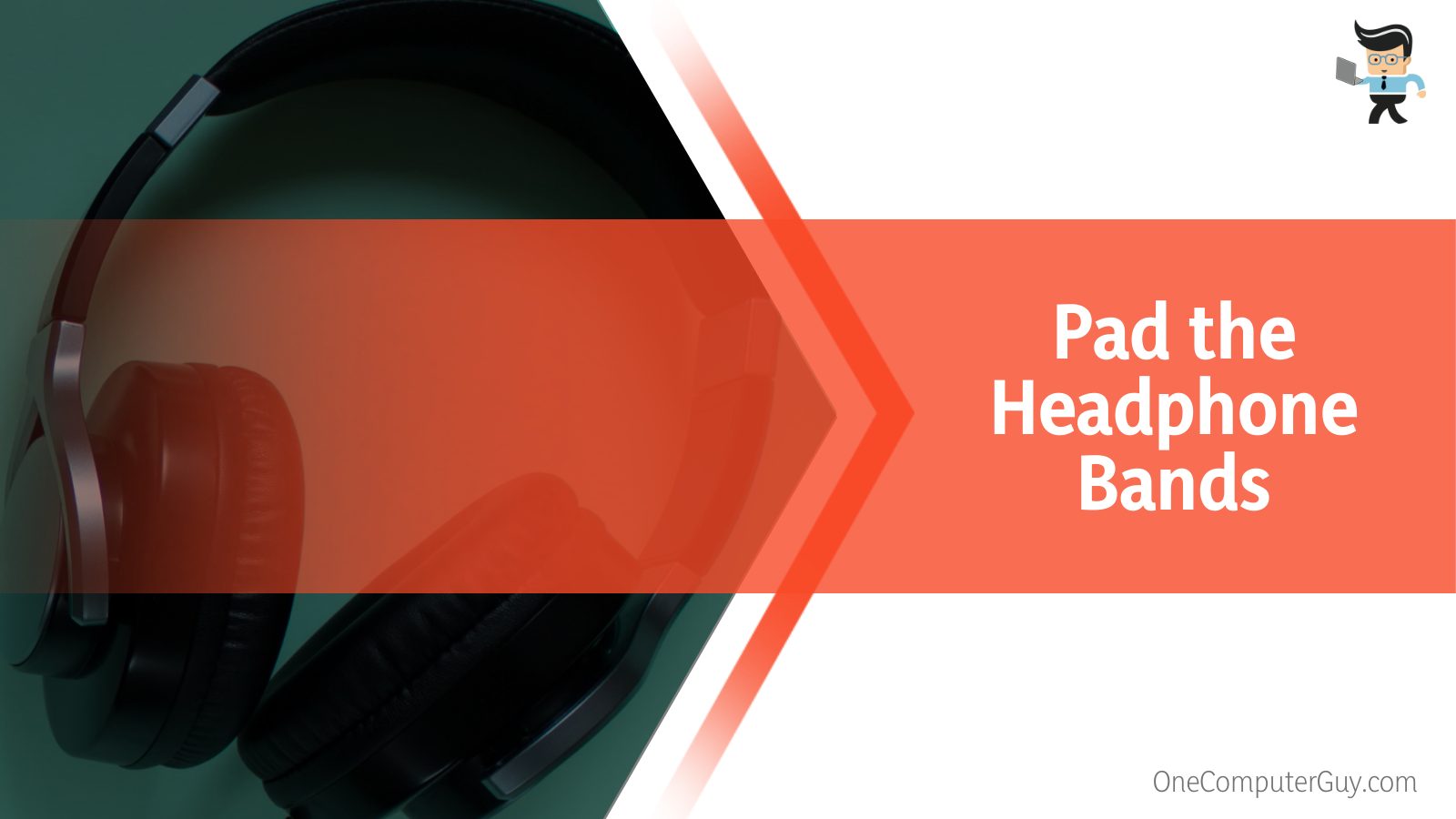
You can also go the DIY way. This involves removing all the cushioning on the band and replacing them with entirely new padding. You can shop for new headset paddings from online sellers such as Amazon for your specific headphone brand.
Use the padding to make the headsets superbly comfortable. Of course, some padding looks much better than others – so look for classy and better-looking cushioning.
– Recline the Headsets to the Back of the Head
While you are supposed to place the headband over your head, it might cause creases or dents on your head. Furthermore, it may be very uncomfortable, especially since it has less padding. In this case, recline them to cover the back of your head rather than the top.
This will relieve some pressure off the top of your head, injecting some comfort. However, placing your headsets in this manner may require support. So consider moving back and forth between the top and the back of your head.
– Take Off Your Headsets Periodically
If you plan to use your headsets for a long time, remove them from time to time. This is one of the finest tricks to prevent dents from occurring on your head.
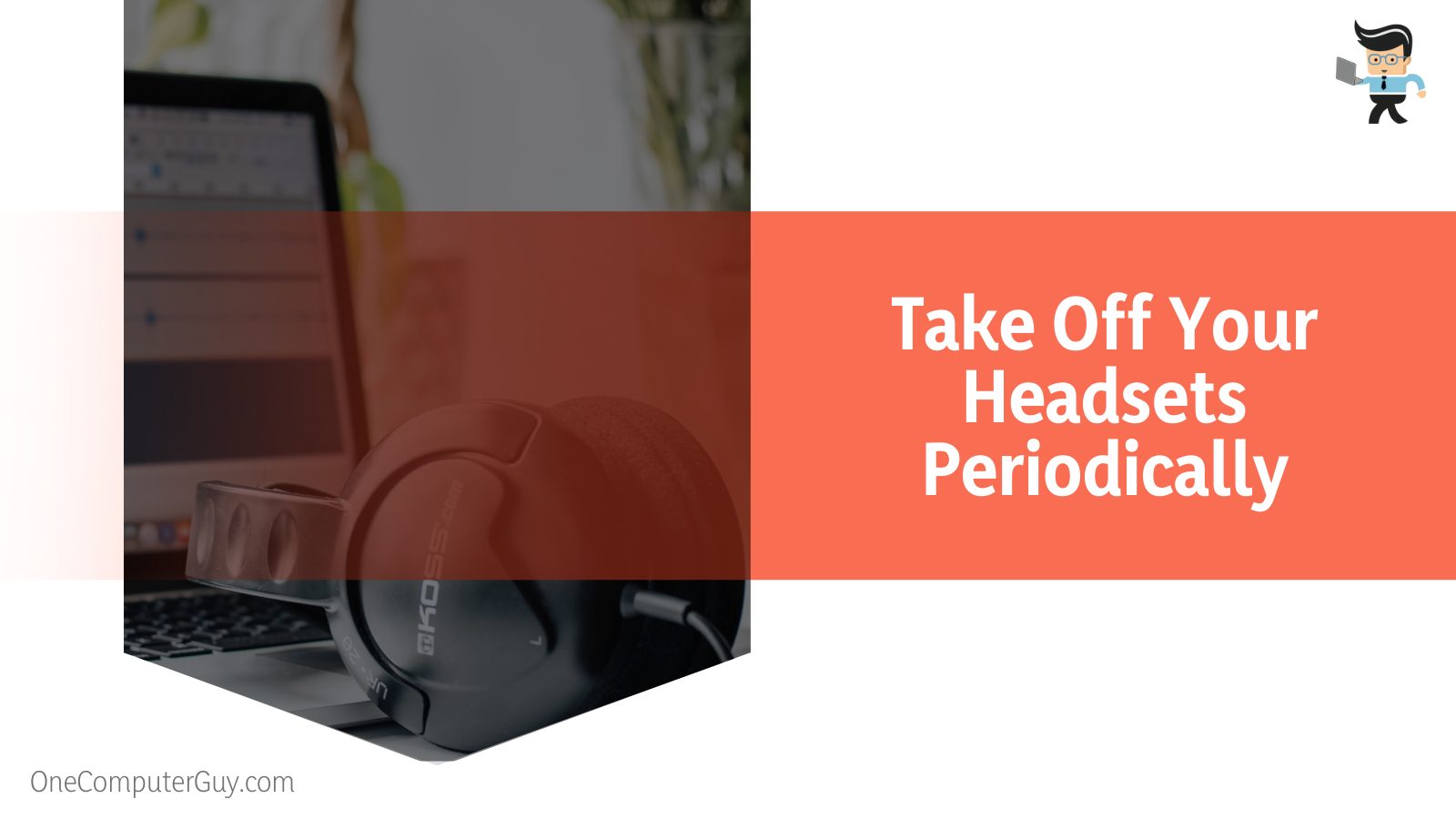
Remove the headphones for a few minutes each hour to relieve your head from the strain.
– Replace Your Headphone
If you consistently get head creases or skin dents, you might use the wrong pair of headphones. Therefore, consider getting another headset pair. Similarly, if your headsets are old, consider buying a new pair for better comfort.
Remember, some headphones are poorly designed and apply a lot of pressure on the skull. This makes wearing them very uncomfortable. Before buying a new headphone pair, try them out. Knowing the feel and the touch will allow you to settle on a comfortable and high-performing pair.
– Choose the Right Material
Most headbands are designed from plastic, while a few are made from metals and other materials. On the other hand, the cushion is mostly soft padding wrapped in PU leather.
Some do not have a padding layer – using these headsets will result in discomfort, especially if they have a poor fit. So, check the padding amount and type to ensure it is comfortable before buying the headphones.
Do Headphones Make Accessories Dig Deeper?
Yes. Headphones can make your accessories, such as eyeglasses, dig deeper into your skin. Most eyeglass wearers understand the plight of wearing their glasses with headphones.
It is uncomfortable even if the headphones have a relatively light clamping force and soft pads. Typically, the force and earcups press against the frame, burrowing them into the skin.
Additionally, if you wear over-the-ear earcups alongside your earrings, the level of discomfort can be unbearable with time. Therefore, removing the earrings when you wear the headphones might be a good idea. Alternatively, you can use in-ear headphones.
Do Headsets Deform Ear Shape?
No. Headphones do not deform the shape of the ear of the wearer. Typically, no reports or evidence of headphones deforming ears has been reported. So, you should not worry about losing the shape of your ears.
Usually, the ear structure develops fully by the time you are eight years old. Unless you have an underlying condition, your ear shape remains the same.
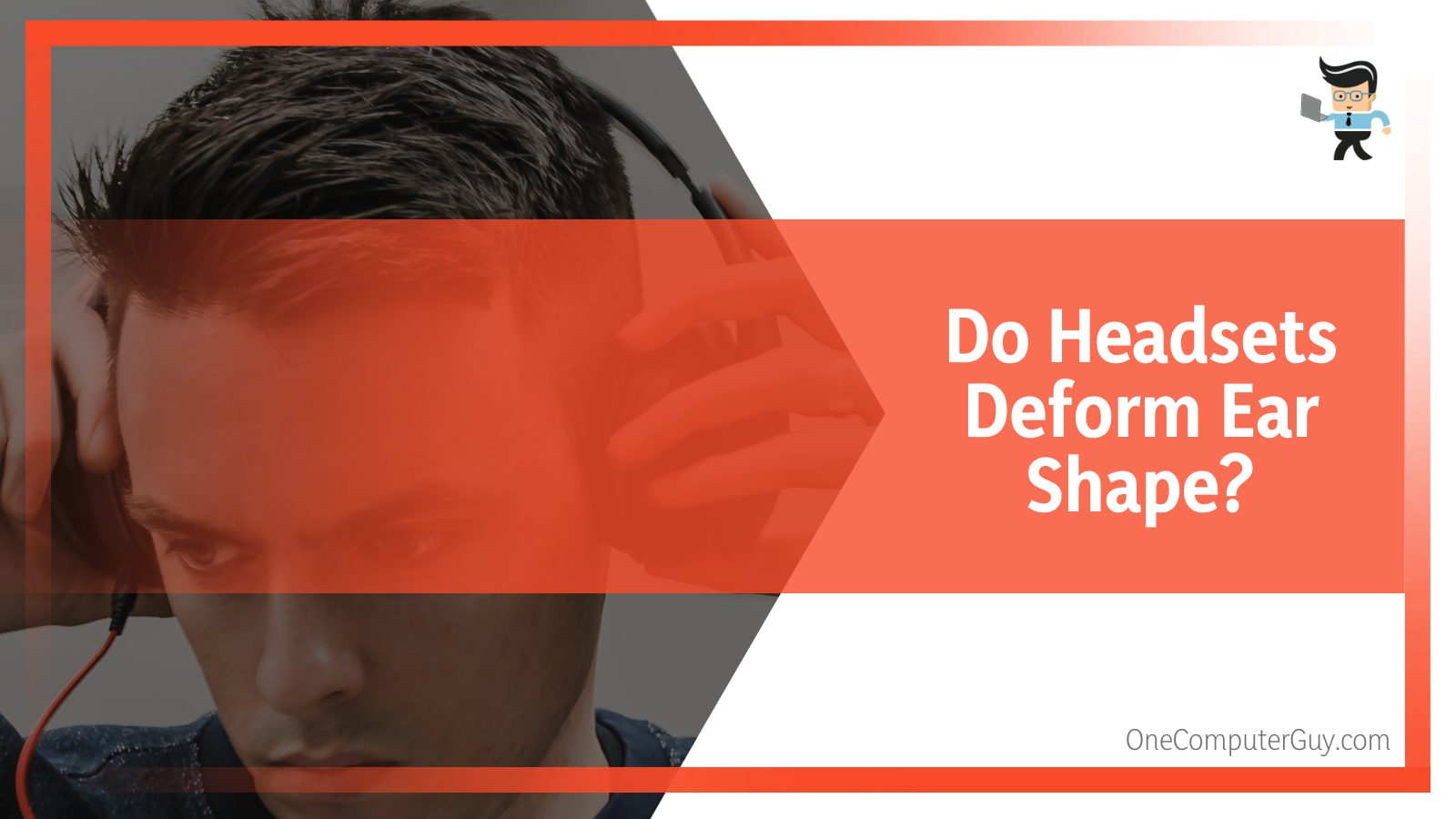
Now, what happens when you place the headphones over your ears? It presses your ear lobes against your head, causing an uncomfortable feeling.
However, when you remove the headphones, your earlobes return to their normal shape and position. But, when you use the headphones for a prolonged time, you will not give your ears time to regain their original shape. For this reason, you may see that your ears have changed their shape – this is still temporary.
Do Headphones Cause Hair Loss?
Headphones cannot cause hair loss. Instead, hair loss results from other factors within an individual’s body. The factors that may cause hair loss include:
Your genetics: There is a genetic predisposition that accelerates hair thinness and hair loss in some individuals.
- Stress: Immense stress can cause the immune system to attack hair follicles. This weakens them causing hair loss.
- Specific Medication: Many medications can cause you to lose your hair. For instance, some weight loss medications can shed hair from your scalp. Also, other drugs, such as mood stabilizers and birth control pills, might cause hair loss.
- Hormonal imbalance: Hormones influence the hair growth cycle significantly. A slight imbalance can affect the process of hair loss. For instance, estrogen supports hair growth, unlike androgens; if there is an imbalance, you will experience hair loss.
- Nutritional deficiencies: Vitamin B12 deficiency can lead to premature hair loss.
While headphones cannot cause hair loss, they exacerbate the hair loss process. When you wear the headphones, they push atop your hair without noticing. Strong hair follicles can withstand this push and pull. Nevertheless, weaker hair will not withstand this headphone movement and, thus, give in.
Furthermore, if you have dyed your hair, it is more likely to fall off than if you have your natural hair when using headphones.
FAQ
– Should I Be Worried About Headphone Dents?
No. A typical dent from your headset should not worry you because they are a crease or dent on the skull’s skin. The dent from the headset does not concern the skull; therefore, you should not worry about them.
Therefore, how long does it take for a headset dent to go away? Such dents will normally last up to two hours only. If it exceeds this, see a doctor.
However, if your skull has a dent, it may be due to trauma, injury, or a problem that may need medical attention.
– Can I Get Rid of Headset Dents?
Yes, you can quickly eliminate the dents if you don’t want them to go away by themselves. Learning how to fix head dent from headphones is easy. Here are the methods you can use:
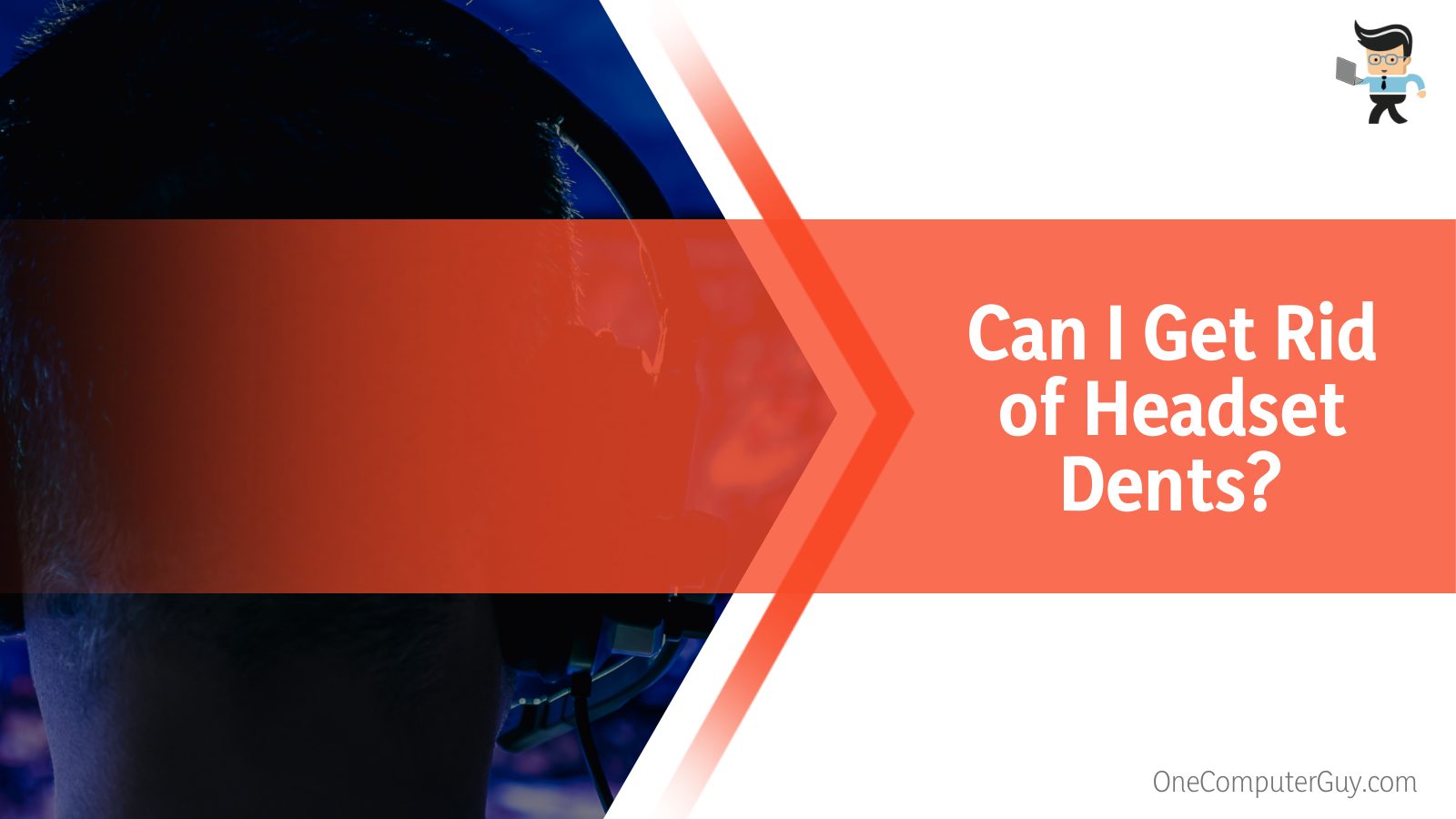
- Rub or massage the dent: Gently massage the area around the dent to improve blood flow. This might help your skin return to its standard shape much faster.
- Wash your head with warm water: Washing your head with warm water will help to relax or expand your skin, returning it to its original shape. However, if you have headphone hair, splash water on your head to solve the problem.
- Give your head time: If you feel uncomfortable or have some pain in the crease area, consider giving yourself time. The mild impressions on your head will disappear with time – this is not the quickest method, but it is the surest.
Conclusion
We have reviewed the effects of wearing headsets for a long time in this post. Let’s put forth our final thoughts:
- Wearing tight and bulky headphones can cause temporary dents on your skin or cause “headphone hair.” The dent/ crease disappears within a few hours.
- The temporary indentation occurs when you wear headphones for a long time or using too tight headbands.
- You can reduce the severity of dents by increasing padding on the headband, wearing a beanie, or replacing your current headsets with new comfortable headphones.
- To quickly remove the dents, take a warm shower or massage your head with warm water to expand the skin in the affected area.
These are helpful tips that we hopefully feel will help you. Keenly follow them, and you won’t worry about these dents.
Ref:
- https://www.ncbi.nlm.nih.gov/pmc/articles/PMC4543020/
- https://rarediseases.info.nih.gov/diseases/6542/gorhams-disease
- https://pubmed.ncbi.nlm.nih.gov/1238919/
- https://patents.google.com/patent/WO1990002470A1/en
- https://www.mayoclinic.org/healthy-lifestyle/stress-management/expert-answers/stress-and-hair-loss/faq-20057820
- https://metro.co.uk/2016/07/30/how-your-headphones-might-be-damaging-your-hair-6038528/







